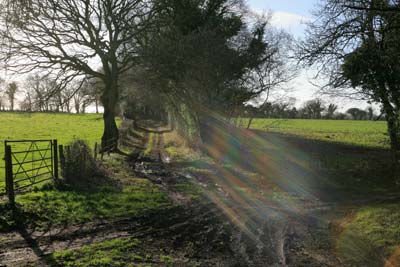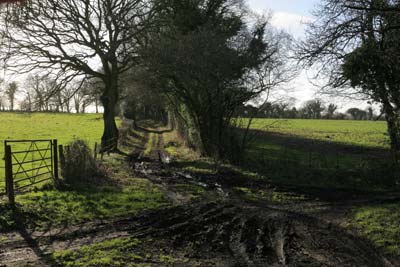
This is a record shot I took for the geograph web site. The winter sun is fairly low in the sky and just off the left hand side of the picture. It is taken on a tripod at f16 and 1/100 second and with the zoom set to a focal length of 43 mm. Canon's standard petal-type lens hood, the EW83-F, was fitted. As can be seen there is considerable flare.
I noticed this flare and took another shot with my hand held beyond the end of the lens hood, and just out of sight. This got rid of the flare, and it also caused the camera to reduce the exposure by 1/3 of a stop.

Obviously, there is a problem with a lens hood of fixed shape when fitted to a zoom lens, because the angle of view of the lens depends upon the zoom setting. Canon has done its best to mitigate this problem on this particular lens, the EF24-70mm f2.8L, because the design of the lens is such that it gets longer as it is adjusted to shorter focal lengths (=wider angle of view). Canon has arranged that the lens hood stays in the same position whilst the front element of the lens moves forward inside the hood. Thus, the lens is deeper set within the hood at its telephoto end, and only uses the front part of the hood at its wide angle end. This is a neat solution, but it is apparent that it is less than a perfect one.
So the moral is: when shooting contre jour with a zoom lens, don't assume that the lens hood will always do the best possible job. Keep a look out for flare and be ready to shield the lens by other means.
In the above example, the flare was very obvious. There are probably other situations in which there wouldn't have been any obvious flare but there would have been a subtle reduction in contrast.
Peter Facey, Winchester, England
20070121